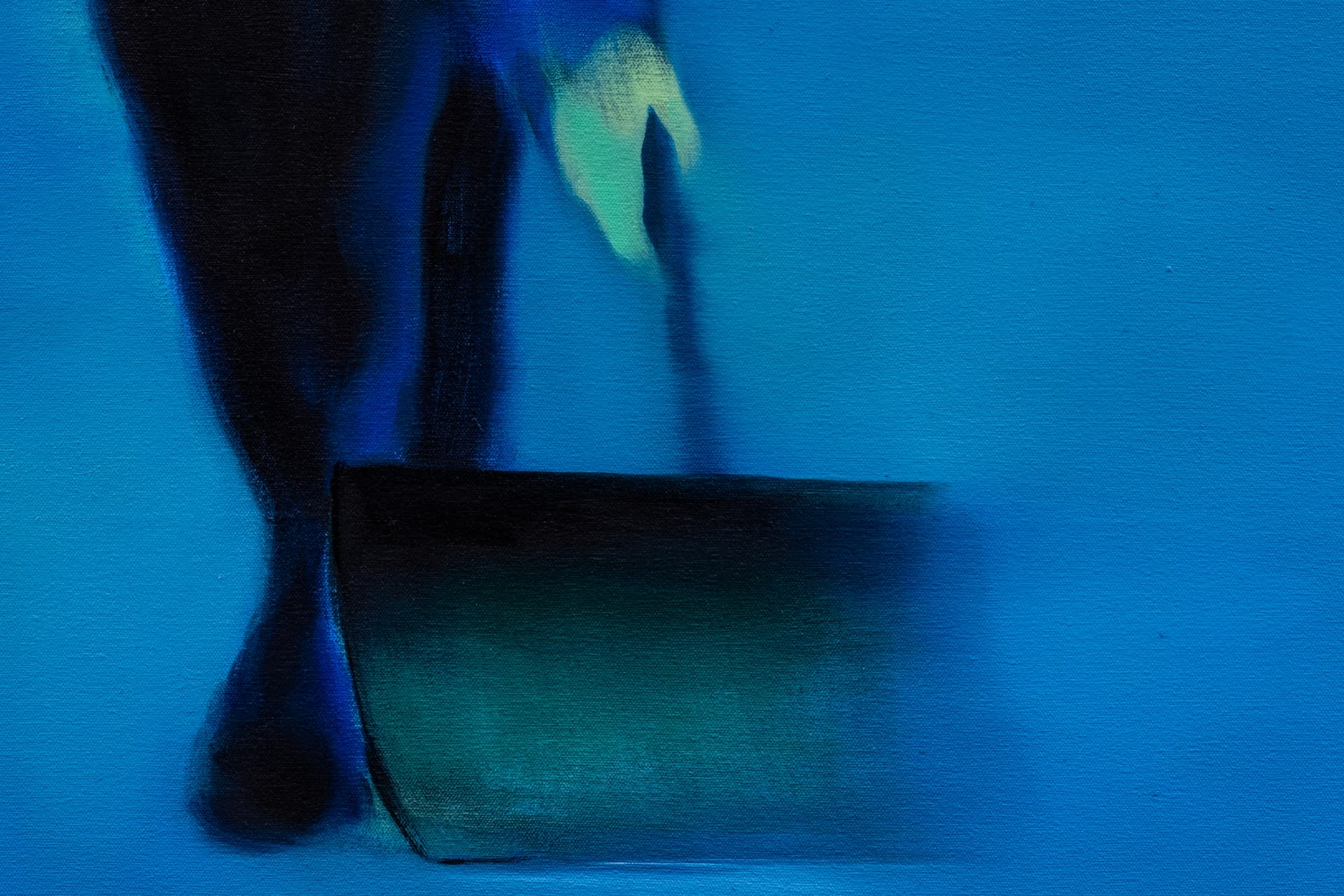Cathleen Clarke: The New Path
Alja Zoë Freier
First comes the blue. A faint sheen that dulls the light. Everything dimmer. Days slip by in quick jolts of sun. You turn around—already dark.
Snow falls, then falls again. It piles without pause. Soft, but heavy. Mountains of silence.
True, there are snowballs in children’s hands, the thrill of sledding downhill, snow blowing fresh in the face, rays that catch the whiteness just right, a sudden flash—a blinding mother-of-pearl, a shell gleaming in a sea of shells. But that belongs elsewhere. Not here.
The old man has seen many winters. He’s stood in the night-shadow of trees, shovel in hand, carving a path.
He knows the long hush of the season, the makeshift remedies we gather against the wind—a wool scarf, brave boots, a pair of trembling headlights. He knows the distant gleam of the cold moon, the sky startled alive by northern lights, the way frost clings to every surface like a second skin. He knows the feral quiet, how snow swallows sound like a beast watching from the tree line, holding its breath.
The black ice.
Winter in Northern Illinois is not a standard 90 days, or 2,160 hours. It can stretch closer to 120 days.
The winter of 1978–79 was the coldest in state history. Average temperatures dropped to 18.6°F (-7.4°C), with lows reaching -30°F (-34.4°C) in rural regions. Snowfall exceeded 80 inches in some counties.
Between 60 and 100 people died from cold-related causes: hypothermia, carbon monoxide poisoning, cardiac arrest while shovelling.
Black ice on country roads triggered fatal collisions as visibility dropped and traction vanished.
Around the solstice, the sun rose at 7:20 AM and set at 4:30 PM.
Nine hours of day. Fifteen hours of night.
The old man lifts his shovel again. There is faith in that persistence.
A numb wisdom in the sudden scrape of steel against ground. A known resistance.
More snow tomorrow.
He digs to remember.
He knows the path will vanish again. Each day, he begins a new one.
Cathleen Clarke was born in Chicago, Illinois in 1988. At ten, she moved with her parents to a farm in Harvard, in the northern part of the state. Winters came with silence, isolation, and the labor of clearing paths that would soon disappear under snowfall, only to be redrawn again.
Work that reset itself, season after season.
Among the strongest memories of this time is the black ice—the invisible hazard on every surface that brought surprise, wreckage, and loss. One year, her car slid into a ditch three times.
A record, of sorts.
This ongoing struggle with the elements—and the ironic hope that a scarf or a pair of headlights might be enough—has lingered in Clarke’s work. In Drifters (2025), her figures slide down a hill, wind howling against them, dodging trees, committed to reaching the bottom no matter the cost. In Whispering Wind (2025), the gust itself strides among us in playful gestures, shielding himself too, like all others, with a scarf the color of the setting sun.
Weather can borrow human traits in Clarke’s paintings just as easily as nature can assume the role of an observer. When she first saw the northern lights while walking down a snowy road with her mother, they seemed to hover—patient and immense. Northern Sky (2025) holds onto this sensation: the awe of looking up, and of being looked right back upon.
It was in Northern Illinois that Clarke began to draw.
In the pauses between storms, before the next whiteout, she and her siblings would take up shovels and carve paths across the land. She’d slip on an old snowsuit, slide a CD player into her pocket, and walk into the cold with music in her ears. Moving through the dark, she began to locate her own rhythm.
This is the rhythm that carries itself into Sparrow Nights (2025), in Clarke’s world a painting where a figure appears almost dressed in snow, while in Raymond Carver’s final book of poetry, A New Path to the Waterfall, from which the title comes:
“There are terrible nights with thunder, lightning, rain, and wind, such as are called among the people "sparrow nights”.”
But in Clarke’s Northern Illinois, there were other kinds of nights too.
“Anyone who has lived in the country in winter and knows those long, dreary, still evenings when even the dogs are too bored to bark, and even the clocks seem weary of ticking…” *
It’s in the drift between the terrible nights with thunder and those dreary, still evenings that much of Clarke’s sensibility has formed. From that stretch of cold and quiet, she began to trace her own temporary paths. A way forward. Her lines to the waterfall.
*Anton Chekhov, The Wife and Other Stories.



